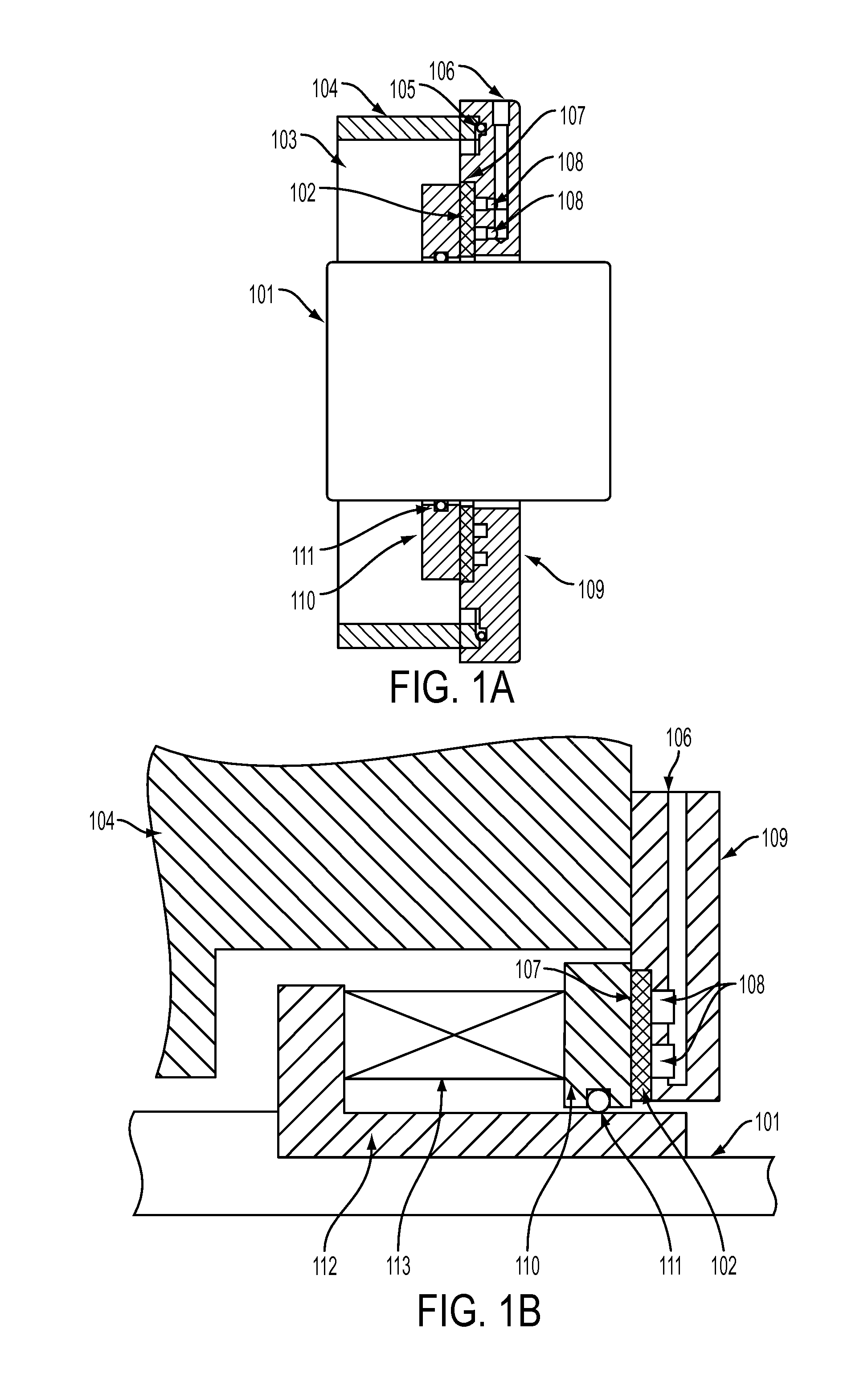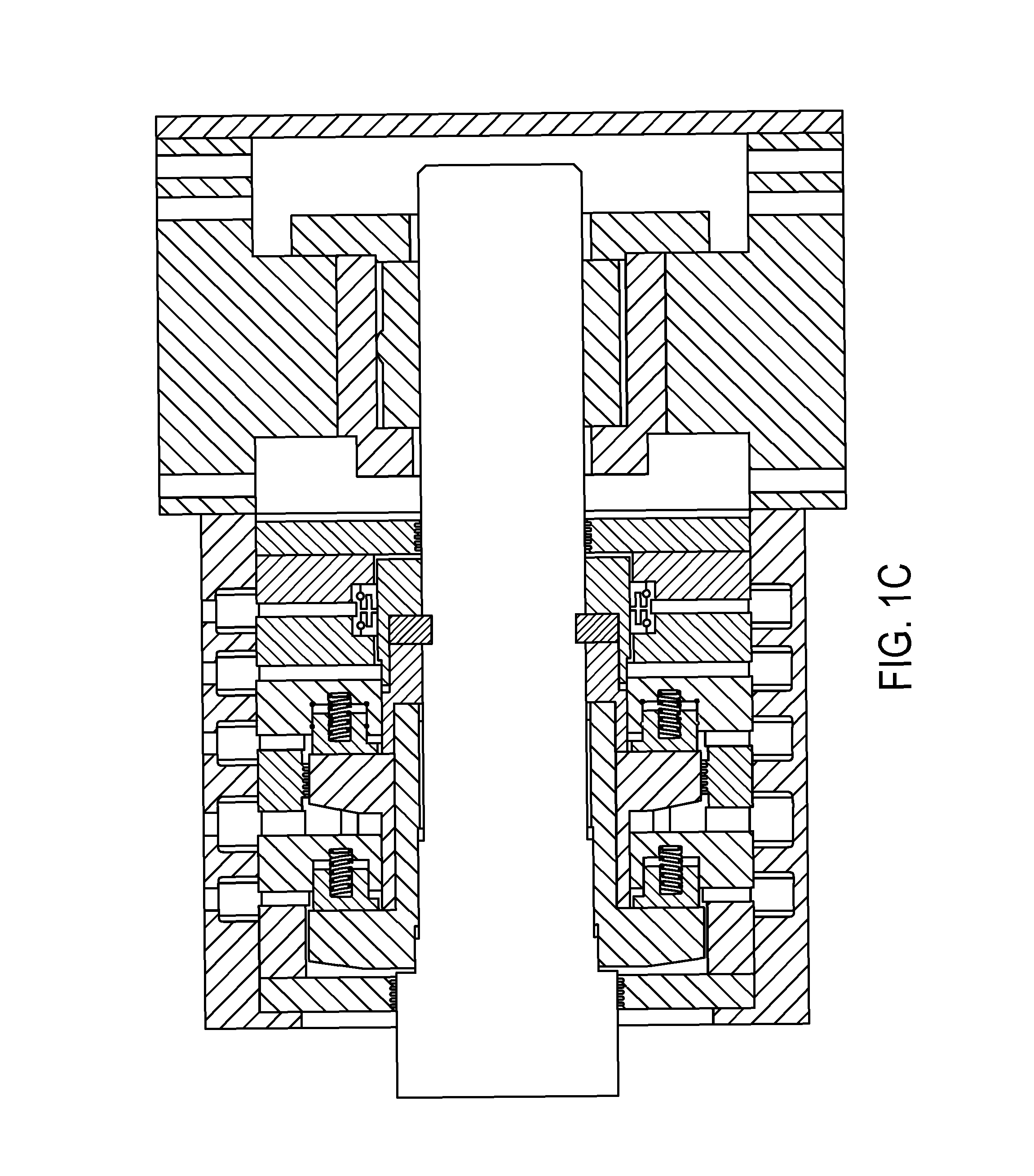Air bearing for use as a seal
a technology of air bearings and seals, applied in the field of seals, can solve the problems of large flows, wear grooves in the shaft, wear and leakage, etc., and achieve the effects of reducing friction wear and heat generation, stable and reliable, and easy adjustmen
- Summary
- Abstract
- Description
- Claims
- Application Information
AI Technical Summary
Benefits of technology
Problems solved by technology
Method used
Image
Examples
Embodiment Construction
[0054]Preferred embodiments of the present invention are set forth in detail with reference to the drawings, in which like reference numerals refer to like elements throughout.
[0055]With reference to FIG. 1A; a shaft 101 which may rotate at high speeds has a runner 110 coupled to it via an O-ring 111 (or another mounting mechanism as detailed in illustration 1B or other arrangements detailed in this specification or known in the art). O-rings provide axial compliance to the runner allowing for self adjustment of the gap between it and the stationary surface and axial displacements of the shaft. If the runner is hard mounted to the shaft some axial compliance should be designed into the stationary components. The runner is free to move radially on the air film. Conventional mechanical face seals as shown in FIG. 1B often have a spring loading mechanism to urge the opposing faces of the seal into contact. This technique is well-known in the art and may be employed to adjust the load o...
PUM
 Login to View More
Login to View More Abstract
Description
Claims
Application Information
 Login to View More
Login to View More - R&D
- Intellectual Property
- Life Sciences
- Materials
- Tech Scout
- Unparalleled Data Quality
- Higher Quality Content
- 60% Fewer Hallucinations
Browse by: Latest US Patents, China's latest patents, Technical Efficacy Thesaurus, Application Domain, Technology Topic, Popular Technical Reports.
© 2025 PatSnap. All rights reserved.Legal|Privacy policy|Modern Slavery Act Transparency Statement|Sitemap|About US| Contact US: help@patsnap.com



